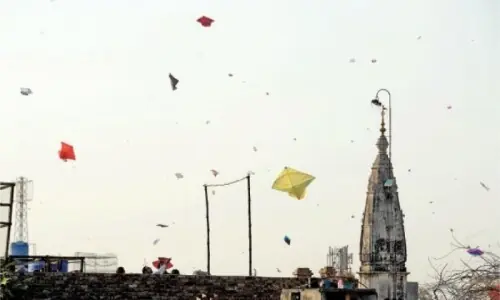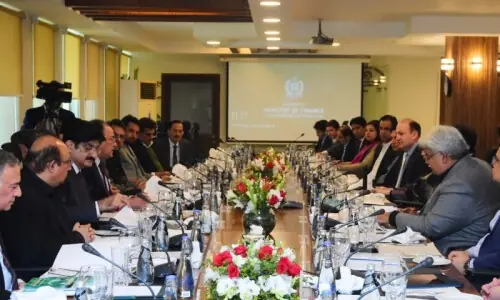ISLAMABAD, July 28: Pakistan is most likely to face a major energy crisis in natural gas, power and oil in the next three to four years that could choke the economic growth for many years to come, official estimates and energy experts suggest.
Pakistan’s total energy requirement would increase by about 48 per cent to 80 million tons of oil equivalent (MTOE) in 2010 from about 54 MTOE currently, but major initiatives of meeting this gap are far from turning into reality, said a former petroleum minister on condition of anonymity for the simple reason that he had also served the present government.
Major shortfall is expected in the natural gas supplies, he said. According to official energy demand forecast, he added, the demand for natural gas, having about 50 per cent share in the country’s energy consumption, would increase by 44 per cent to 39 MTOE from 27 MTOE currently.
Partly contributed by gas shortfalls, the power shortage is expected to be little over 5,250MW by 2010, he said, adding that the oil demand would also increase by over 23 per cent to about 21 million tons in 2010 from the current demand of 16.8 million tons.
This would leave a total deficit of about nine million tons of diesel and furnace oil imports, he said. Since the gas shortfalls were expected to be much higher, the country would need to enhance its dependence on imported oil, thus increasing pressure on foreign exchange situation, he added.
Last year’s oil import bill amounted to about $6.5 billion compared with about $3.5 billion in 2004-05, mainly because of higher international oil prices - a burden expected to be even higher in future as a result of growing Middle East crisis.
Current year’s oil import bill has again been projected by the government at about $6.5 billion on last year’s average prices, which have started to rise in the recent days.
According to the former minister, the government had planned five major initiatives to meet these energy requirements. They included three gas import pipelines, Gwadar port as energy hub and LNG import. However, four of these measures, including the three import pipeline projects, show no signs of progress for various reasons while concentration on energy facilities in Gwadar would chiefly depend on security situation, besides oil and gas import pipelines.
Planning Commission sources said the government had planned to add an overall power generation capacity of about 7,880MW by 2010. Of this, about 4,860MW is to be based on natural gas, accounting for 61 per cent of capacity expansion.
However, the gas-based power expansion of about 4,860MW would remain in doubt since these estimates were based on gas import options for completion in 2010, 2015 and 2020, said the sources.
The fifth initiative of LNG import was on schedule and would start delivering about 0.3 billion cubic feet of gas (BCFD) by 2009 and another 0.5 BCFD by 2015, said the sources.
Petroleum ministry officials are not ready to speak on record about gas import options and resultant overall energy shortfalls because of recent political developments on Iran-Pakistan-India pipeline project and security situation in Afghanistan and non-certification of gas reserves in Turkmenistan.
According to World Bank estimates, a demand gap (supply shortage) of about four per cent of the total demand, is expected in 2010. Even though this gap would be met by LNG imports, it would again increase to 20 per cent of the total demand. The bank said the indigenous gas supply would fall from 32.6 MTOE in 2010 to 20.7 MTOE in 2025 while the ‘gas supply-demand gap’ would rapidly increase as demand is expected to grow continuously, quadrupling in 2025.
As per the World Bank estimates, the gas imports will represent almost 67 per cent of natural gas supply in 2025. One can, therefore, gauge the quantum of shortage in case import pipelines are not materialised.
Pakistan’s gas reserves are 32.8 TCF at present, with reserve-production ratio in the order of 27 years, considering that domestic production does not grow substantially. Power sector demand represents 41 per cent of total gas consumption, general industries 24 per cent, fertiliser 7.8 per cent and domestic-commercial 22.8 per cent, cement 1.5 per cent and CNG 2.8 per cent.
Demand growth has been up to 8.5 per cent in recent years and is expected to be seven per cent with power industries and domestic consumption accounting for 82 per cent. Gas demand already displays seasonal pattern with national demand growing in winter beyond transmission capacity. Therefore, supplies to large users mainly industries and power plants are curtailed during winter months to ensure supplies to domestic, commercial and small industries. Annual production at present is about 1.16 TCF.


































